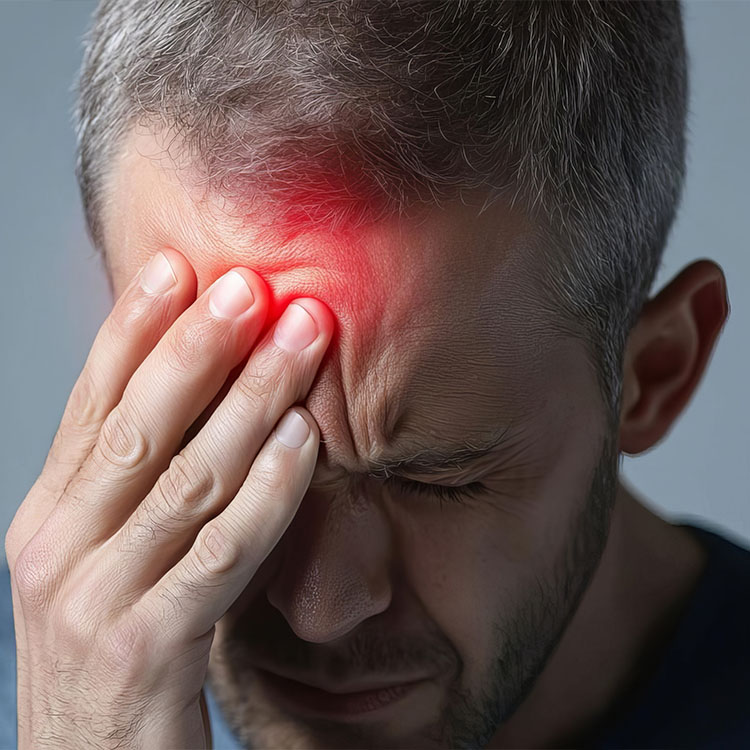Symptoms of Cluster Headaches
Unlike migraines, which can last for hours or even days, cluster headaches are shorter in duration but much more intense. Symptoms often include:
- Severe, stabbing pain – Typically focused around one eye or on one side of the head
- Red, teary eyes – Usually on the affected side
- Runny or stuffy nose – Similar to allergy symptoms but occurring alongside the headache
- Facial sweating or flushing – The skin may become warm or appear red
- Eyelid drooping or swelling – The affected eye may appear smaller or swollen
- Restlessness or agitation – Many sufferers feel an uncontrollable urge to move or even bang their heads against a surface in an attempt to stop the pain
One unique characteristic of cluster headaches is their predictability—they often occur at the same time each day, and many people experience them seasonally, leading to confusion with allergies or work-related stress.
What Causes Cluster Headaches?
The exact cause of cluster headaches is not fully understood, but research suggests that the body’s biological clock (hypothalamus) plays a role. Unlike migraines, which can often be linked to specific dietary or environmental triggers, cluster headaches seem to follow a more internal pattern.
However, some known triggers include:
- Alcohol consumption – Even small amounts can trigger an attack during a cluster period
- Smoking – Though not a direct cause, smoking may increase the likelihood of cluster headaches
- Certain medications – Drugs that affect blood vessels may trigger an episode
- Changes in sleep patterns – Disruptions in sleep, such as jet lag or shift work, may contribute
Diagnosis and Treatment Options
How Are Cluster Headaches Diagnosed?
A doctor will diagnose cluster headaches based on:
- Description of symptoms – Pain severity, location, frequency, and any associated signs
- Neurological exam – To assess brain and nerve function
- Imaging tests (MRI or CT scan) – To rule out other possible causes, such as tumors or aneurysms
Treatment Options for Cluster Headaches
There is no cure for cluster headaches, but treatment aims to:
- Reduce pain intensity
- Shorten the duration of headaches
- Prevent future attacks
Common treatment approaches include:
- Oxygen Therapy – Inhaling pure oxygen through a mask can quickly relieve symptoms for many people
- Migraine Medications – Triptans (such as sumatriptan) can help stop an attack
- Calcium Channel Blockers – Medications like verapamil are often used to prevent cluster headaches
- Nerve Blocks or Surgery – In severe cases, nerve stimulation or surgical procedures may be considered


